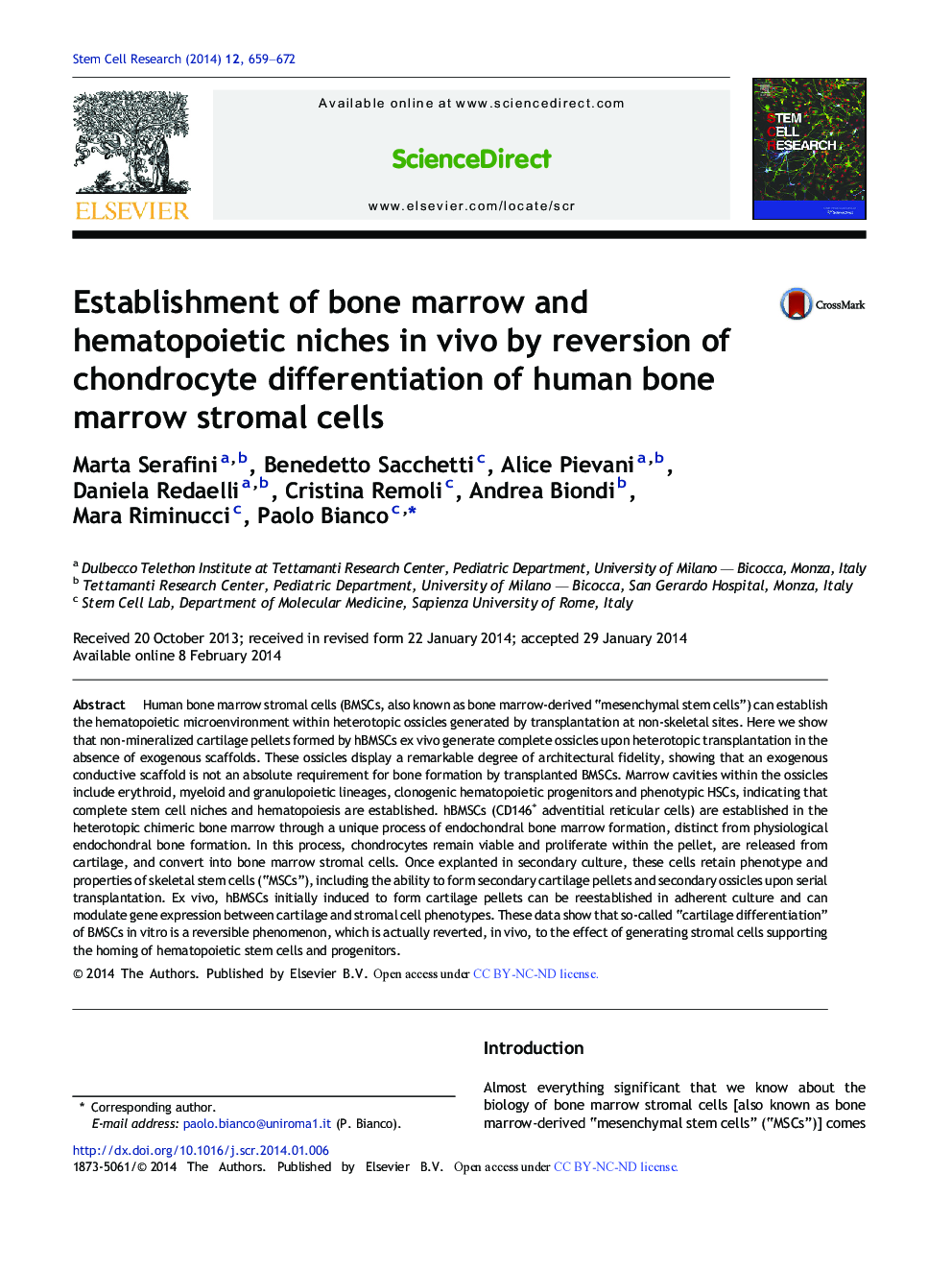| Article ID | Journal | Published Year | Pages | File Type |
|---|---|---|---|---|
| 2094528 | Stem Cell Research | 2014 | 14 Pages |
•Human heterotopic ossicles can be generated in the absence of exogenous scaffolds.•Cartilage pellets convert into ossicles with normal bone–bone marrow structures.•Cartilage pellets develop a marrow cavity through “endochondral myelogenesis”.•The HSC niche can be established in vivo by differentiated chondrocytes.•Chondrocytes in transplanted pellets revert to a stromal stem cell phenotype.
Human bone marrow stromal cells (BMSCs, also known as bone marrow-derived “mesenchymal stem cells”) can establish the hematopoietic microenvironment within heterotopic ossicles generated by transplantation at non-skeletal sites. Here we show that non-mineralized cartilage pellets formed by hBMSCs ex vivo generate complete ossicles upon heterotopic transplantation in the absence of exogenous scaffolds. These ossicles display a remarkable degree of architectural fidelity, showing that an exogenous conductive scaffold is not an absolute requirement for bone formation by transplanted BMSCs. Marrow cavities within the ossicles include erythroid, myeloid and granulopoietic lineages, clonogenic hematopoietic progenitors and phenotypic HSCs, indicating that complete stem cell niches and hematopoiesis are established. hBMSCs (CD146+ adventitial reticular cells) are established in the heterotopic chimeric bone marrow through a unique process of endochondral bone marrow formation, distinct from physiological endochondral bone formation. In this process, chondrocytes remain viable and proliferate within the pellet, are released from cartilage, and convert into bone marrow stromal cells. Once explanted in secondary culture, these cells retain phenotype and properties of skeletal stem cells (“MSCs”), including the ability to form secondary cartilage pellets and secondary ossicles upon serial transplantation. Ex vivo, hBMSCs initially induced to form cartilage pellets can be reestablished in adherent culture and can modulate gene expression between cartilage and stromal cell phenotypes. These data show that so-called “cartilage differentiation” of BMSCs in vitro is a reversible phenomenon, which is actually reverted, in vivo, to the effect of generating stromal cells supporting the homing of hematopoietic stem cells and progenitors.
